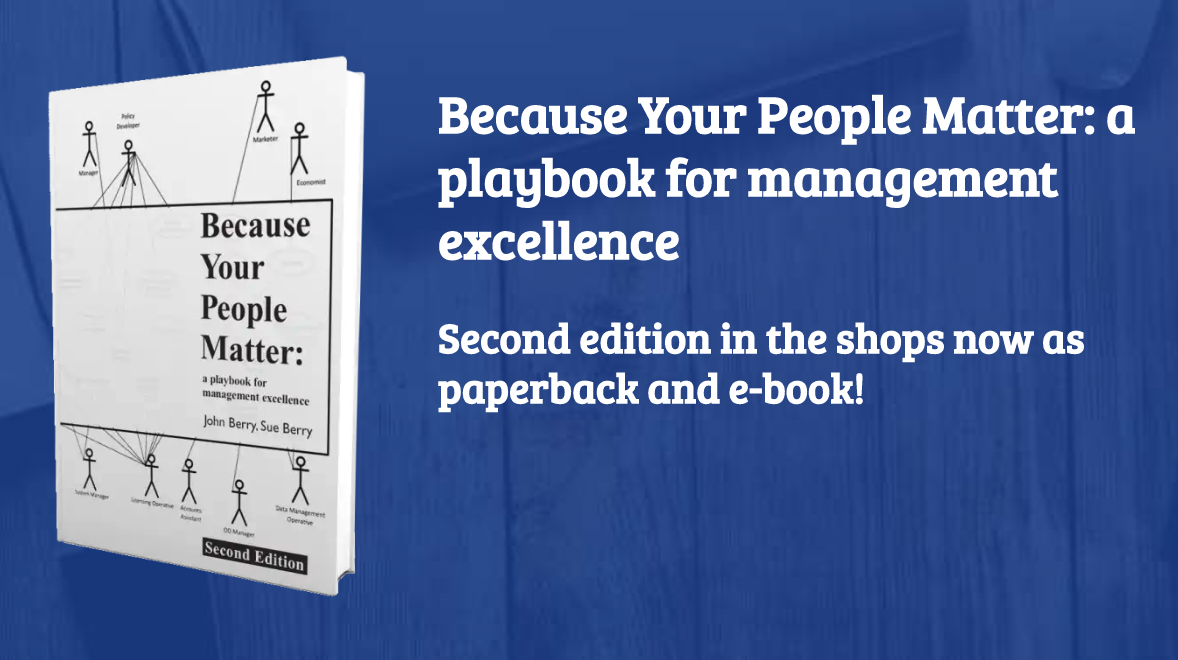One of twelve chapters of our book, Because Your People Matter: a playbook for managers, entrepreneurs, and leaders, serialised here.
Starting Operations: about people, work and systems
Written by John Berry & Sue Berry on 29th December 2022. Revised 5th January 2023.
4 min read
Chapter 4: Starting Operations
Chapter Summary
 A firm doesn’t just work. Someone – the manager – must determine, in detail, what the firm is to do and how it’s to do it. The firm, as a system and in turn as a series of processes involving people and technology, must be defined.
A firm doesn’t just work. Someone – the manager – must determine, in detail, what the firm is to do and how it’s to do it. The firm, as a system and in turn as a series of processes involving people and technology, must be defined.
This definition starts with the contract that the firm has with its customers. The contract of sale sets out what’s to be delivered. This contract, with its deliverables, can be expressed or implied. Either way, it’s to be complied with.
Starting operations
The manager’s job is then making order from chaos. They must shape the firm to be predictable. Predictability comes from determining the processes, and in determining the people and technology in each. We discussed that predictability and processes can’t be guessed. Modelling is essential. There are several models that are particularly useful here – the concept model capturing the whole firm, the use case model showing who does what and the process engineering models using flow charting. We also illustrate the overarching systems model – the model of the systems (incorporating the processes) showing systems boundaries.
 Modelling enables managers to set out what is, to exercise that, and to show what might be if changes are made. The ‘as is’ and the ‘to be’ are key statements in determining change.
Modelling enables managers to set out what is, to exercise that, and to show what might be if changes are made. The ‘as is’ and the ‘to be’ are key statements in determining change.
But still, people must be told what to do in a firm. Even if they are expert professionals, consistency demands defined methods. It’s the manager’s job to instruct their people. We put forward the work breakdown structure (WBS) as the most significant tool to convey necessary activity. And we illustrate how even a hairdressing salon should make use of such thinking. The WBS conveys to the employees what the firm has agreed with its customer.
Role of competencies
Of course, the WBS and other methods of work definition can’t, and shouldn’t, set out every detail. The employee’s competencies and behaviours should give them the ability to interpret high level work definitions and to do what’s needed. It’s for the manager to determine the level of abstraction of such definitions. Too much detail threatens employee job satisfaction. Too little risks poor quality and misunderstandings.
We develop several definitions of quality but centre on the thought that quality is doing what is agreed with the customer – even if that agreement is tacit and the subject of societal norms. Quality also depends on technology function and the competencies and behaviours of the employees using the technology. We illustrate that managers can change the technology or change the competencies and behaviours of the employees to achieve the desired capability.
That leads us to the ‘where’ and the ‘when’ of processes and work done – and the definition of working hours and the spatial nature of the firm. All managers must recognise the modern trends of flexible working, timeless time, and distributed workforces.
Working from home
 This flexibility trend has been amplified by the Covid pandemic where as many as 45% of UK employees worked from home, with many enjoying huge improvement in work-life balance. We have characterised this idea of homeworking by describing what’s needed. We define the location where work is done as the workhome. Critically, we point out that if working from home is to become a norm, dwelling design, government regulations and mortgage and rental contracts must change to facilitate workhomes for all.
This flexibility trend has been amplified by the Covid pandemic where as many as 45% of UK employees worked from home, with many enjoying huge improvement in work-life balance. We have characterised this idea of homeworking by describing what’s needed. We define the location where work is done as the workhome. Critically, we point out that if working from home is to become a norm, dwelling design, government regulations and mortgage and rental contracts must change to facilitate workhomes for all.
The systems of the firm would be incomplete without discussion about innovation. Innovation is a badly understood and badly defined word and, to help managers, we develop a clear definition. This leads us to look at how managers can encourage innovation in their firms, and hence what organisational culture is needed for innovation to happen.
The sustainable firm
Finally, we ask what makes a firm sustainable – and sustainability is not about the firm’s green credentials. Sustainability is the ability of the firm to still be in business, satisfying customers and employing people in the years to come. We present sustainability as the ability to counter threats to the business and we set out an approach involving identification of strategy, threat identification, risk assessment and the use of controls to sustain performance for the long term.